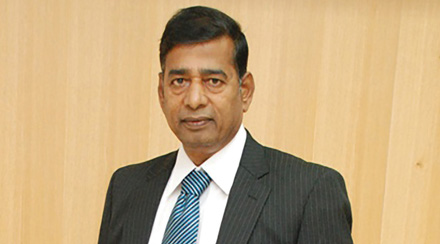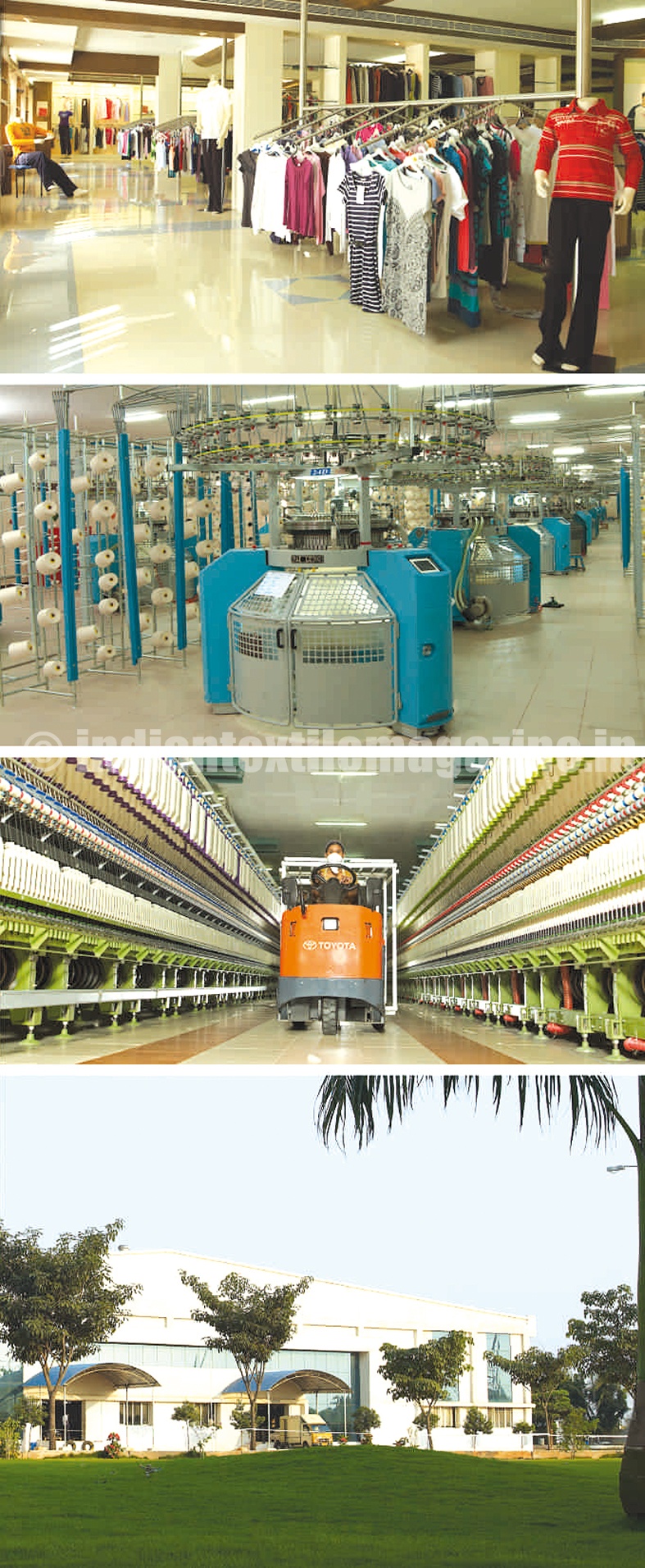K.P.R. Mill Ltd. is one of the largest vertically integrated apparel manufacturing companies in India. The company produces yarn, knitted fabric, readymade garments and wind power. It has state-of-the-art production facilities in Tamil Nadu. With a workforce of over 15,000 employees, it has a cumulative capacity of 3,53,568 spindles to produce 90,000 MT of yarn per annum, a knitting facility to produce 27,000 MT of fabric per annum, and a garmenting facility to produce 95 million pieces of ready-made knitted apparel per annum, and an industry-acclaimed ETP embedded fabric processing unit with a capacity of 9000 MT per annum. Capacity doubling is underway.

During the year, KPR registered a consolidated revenue of Rs. 2,614 crores and a net profit of Rs. 210 crores. The garment segment performed well. Exports constitute 36 per cent and domestic 64 per cent. “With regard to various value addition-driven strategies initiated, conversion of conventional yarn capacity to value-added yarn is completed. The 12 million green field garment capacity, commissioned last year, has reached its full capacity during the fourth quarter. Further, a new 36 million green field garment capacity was commissioned on April 24 last.
With doubling of garment capacity in two years (47 to 95 million) KPR is now one of the largest garment manufacturers in the country. Ramping up of new facility is in progress and will be completed in the current financial year.
“To meet the needs of the expanded garments segment we are doubling the processing capacity by adding advanced cold pressed technology that minimises water consumption as well as cost of production. Hi-tech rotary printing is also contemplated”, says Mr. K.P. Ramasamy, Chairman.
Review of operations
In the year under review, despite challenges faced by the industry and economy in general, KPR Mills has performed well. Sensing the need of customers for speciality products, the company started producing the Slub effect Melange (Colour Melange) and Polyester Cotton Yarn, besides converting the existing facility to value added compact yarn producing facility. These products carry higher margin and consistent demand. The garment Industry is expected to continue it’s upbeat.
Exports from the Tirupur market, the knitwear hub of India, the value of shipments crossed Rs. 21,000 crores for fiscal 2015. If the same trend continues for three years, the exports would double. “Our expansion initiatives are progressing well as contemplated. With the above strategies, the company is hoping to secure higher margin in the coming years”, says the Chairman.
Garments capacity expansion
The expansion of KPR’s garment capacity by 36 million garments to cope up with the upsurge in market demand is progressing well and nearing completion. It would entail the company as one of the largest garment producing corporates in India. The response from existing customers as well as from new markets is much encouraging. The interest evinced by leading Brands from new markets substantiates the company’s right move. It is expected to be commissioned during the first quarter of financial year 2016-17.
The sustained growth foreseen in global apparel industry coupled with a shift in overall trade towards Asia over the years in view of lower cost of production, has made India the most preferred, competitive textile manufacturing hub. To keep pace with fast-changing customer demand, design and technology, increase of production capacity coupled with technological advancement has become essential. Currently, India lags in processing capacities in terms of modern technology.
Bearing this in mind and commensurate with the increased in-house requirement on account of garment capacity expansion and future market potential, an expansion drive has been mooted in KPR’s Fabric processing facility which has a backing of strong Effluent Treatment Plant. The key factors of expansion are 100% capacity addition, from 25 MT to 50 MT per day; advanced continuous process technology minimizing the cost of production; and hi-tech rotary screen printing to escalate operations.
Investment to ensure this capacity addition will be Rs. 120 crores funded through internal accruals and bank finance. The project is estimated to be completed in 9 months’ time.
The next growth phase
Empowered as a largest apparel manufacturing company in India with a giant production capacity of 95 million garments per annum, KPR is striding to the next growth phase. Strengthening the growth prospective, it has also ventured into doubling of processing capacity with latest printing technology that entail cost economy and business enhancement. Response from the subsisting as well as new markets for its expansion activities is encouraging.
Conversion of conventional spindles into high value yarn producing capacity is almost completed. The textile & apparel sector, a major contributor to India’s total export earnings, is highly geared to meet the impressive growth in demand both at national and international markets.
KPR’s efforts to enter new markets have started yielding results. All these positive factors, coupled with strong fundamentals, healthy cash flow, high cost debt liquidation and prudent investment would equip the company with sustained business growth.
Encouraging support from existing buyers and entry into new countries in emerging markets vindicate KPR’s strategic move for expanding the promising sectors – garmenting and processing.
“The apparel industry is continuing its fast growth. I remain confident that, with increased garment and processing capacity and the strategic move towards more value-added yarn, KPR is expected to accelerate further growth in the earnings and cash flow in the coming years. Bolstered by the solid strength of its proven business model, operating fundamentals, strong financials, free cash flow, strategic plans, KPR can steer its growth prospects and achieving best standards”, says Mr. Ramasamy with confidence.
The expansion drive facilitates the company’s commitment to grow with the market trend. Its salient features are:
* Elimination of salt usage in dyeing that considerably reduces the water and energy consumption, effluent, etc., thereby minimising cost of production.
* Ensuring improved quality, higher colour uniformity.
* Garnering large overseas customers from new giant markets, besides widening the current client base.
* Safe processing of delicate and sensitive fabrics with minimal interruption through Rotary screen printing.
* Eligible for 10 per cent capital subsidy under A – TUF scheme.
By Rajeswari Prasad
